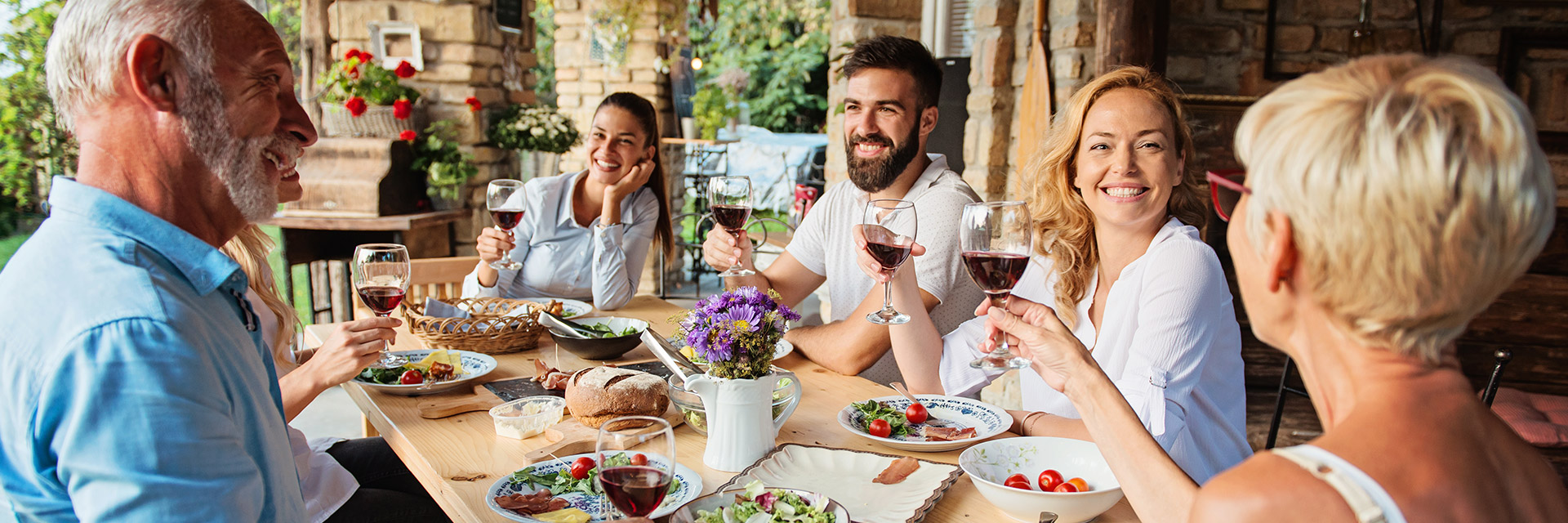Whether you’ve been told by your physician that your cholesterol levels are creeping up, or you already know you have high cholesterol, dining out or grabbing some takeout can seem like it has to go out the window when watching your cholesterol. While it can be a tricky maze to navigate when it seems like you’re at the mercy of whatever is on the menu (and whoever is preparing your food), making heart-healthy choices can be easier than you think. We spoke with Denice Taylor, a registered dietitian nutritionist on the staff at Texas Health Arlington to help break down what to look for, what to avoid, what to limit, and most importantly, how to give yourself grace while dining out.
Know Before You Go
To avoid the stress of figuring out in the moment if the place you’re at has healthier options on the menu, try to look up the menu before you go. Look for it on the restaurant’s website or social media profiles, and if you still can’t find anything, crowd-sourced review platforms such as Yelp! or Google will often have customer-submitted photos of the physical menu for reference.
Looking up the menu ahead of time can also give you the opportunity to narrow down some options you’d like to try or modify, and can get you excited to try a new place instead of worrying about if they’ll be able to accommodate.
Know Your High-Cholesterol Culprits
You know how restaurants have this uncanny ability to make everything sound absolutely delicious, even if you’re not familiar with all the fancy words they’ve used to describe the dish? Knowing your food terms and what foods are typically high in fat, cholesterol and saturated fat, can help keep you focused on making healthier choices.
High cholesterol foods to be aware of, and healthier substitutes:
- Whole milk dairy products – This includes high-fat cheeses and milk, and butter. Substitute low-fat dairy items instead, such as low-fat cheeses and milk, egg whites or eggbeaters, and margarine with no cholesterol.
- Meat – Try to limit your consumption of meat, especially red meat and processed meats such as deli meat and bacon. These items are typically high in saturated fats. If you want to include meat in your meal, look for baked or broiled fish, lean meats, or skinless chicken.
- Fried foods – This may come of no shock but try to avoid all fried foods. Stick to foods that are baked, broiled, steamed, poached, or boiled. If you’re craving French fries, try a baked potato or sweet potato if that’s an option. If you can swap out a less healthy side for a side salad or fresh steamed vegetables, try to take advantage of that option.
- Dessert – We know, dessert literally makes life a little sweeter, but most desserts are high in calories, fat, and cholesterol. If you still want something a little sweet, order a sorbet, frozen yogurt or fresh fruit instead. You can even satisfy a sweet tooth by choosing a dessert wine, which is rich in resveratrol, a compound found in wine that may lower LDL (bad) cholesterol.
Food terms to be mindful of:
- Creamed – poached in milk, cream or similar high-fat liquid.
- Scalloped – baked in a milk, cheese and butter and topped with breadcrumbs
- Au gratin – cooked with cheese
- Bechamel and bearnaise – butter-based sauces
- Aioli – Similar to mayonnaise, but olive oil-based
- Tempura – Japanese term for battered and fried
- Scampi – cooked in butter and garlic
Additionally, don’t be shy about asking how something is prepared. Even healthier items such as veggies or rice can be prepared with high-cholesterol items such as butter or coconut oil. If that’s the case, ask if it’s possible to have that item left out.
Cut Your Plate in Half
It’s no secret that American restaurants are known for large portions, and it can be incredibly easy to eat more than your fair share, especially if you’re caught up in conversation.
Counteract this by asking for a box as soon as your meal arrives, then dividing your plate in half and packing it up for later. And if you get full while eating your halved portion, don’t force yourself to finish it. If there’s still quite a bit left that you could possibly get two more meals out of what’s already in your takeout box, pack it up.
Eat with Your Eyes
Our eyes are amazing tools to help us find what’s healthy on a menu, if there’s photos, of course. Look for bright, colorful foods that will be rich in vitamins and minerals.
At the End of the Day, Give Yourself Some Grace
“Occasionally you might want a food that is not the healthiest choice, or it may be a comfort food you crave, and that’s OK in moderation,” Taylor says. “Eat a smaller portion or see if you can share with someone. But don’t beat yourself up about it. Enjoy your food and keep a positive perspective.”
Be mindful of making healthier choices later that day, whether that means choosing healthier foods or making a plan to take a little post-meal stroll. Acknowledge that you indulged, but it doesn’t mean you’ve completely derailed, and trust in yourself that you’ll get back on track to your usual healthy eating despite this small indulgence.
Looking for more tips on navigating dining out?

